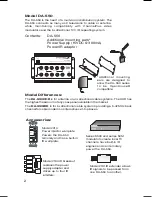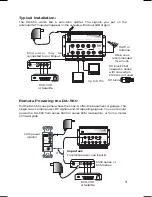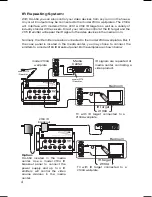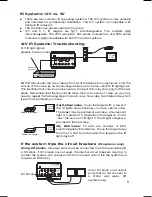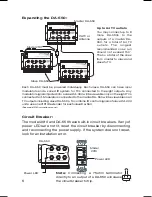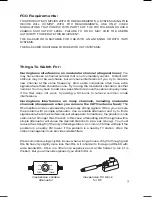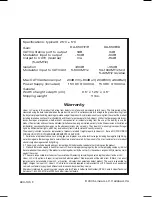
0dB
5dB
20dB
15dB
10dB
min
max
Inexpensive variable
attenuator
Inexpensive DC block
for RF
7
Things To Watch For:
Herringbone interference on modulator channel (diagonal lines):
Herringbone interference on many channels, including modulator
channels (disappears when you remove the CATV/antenna feed):
You
may have chosen a channel number that is not completely vacant. Distant UHF
stations may not be watchable, but will cause interference if you try to create a
new channel at the same frequency. Also, cable companies often have extra
signals where there should be none. Try moving the modulator channel to another
number. You may have to add a low pass filter to remove the cable company noise.
If the filter does not work, try adding a DC-block to remove common mode
interference.
The
RF amplifier can be overloaded by abnormally strong signals. Often, you can cure
the problem with a simple attenuator. Use a variable attenuator and try to find a
signal level where the interference just disappears. Sometimes, the problem is one
station is far stronger than the rest. In this case, attenuating all of the signals with a
simple attenuator will cause the desired stations to be weak (snowy). You must
reduce the strength of the only offending station. A common FM trap will help if the
problem is a nearby FM tower. If the problem is a nearby TV station, often the
station management can provide suitable filters.
We recommend using only RG-6 coax when wiring a house. Why? Although good
RG-59 has only slightly more loss than RG-6, it is harder to find a good RG-59 with
wide bandwidth. RG-6 is a little more expensive and a little harder to run (it is
thicker). But you will avoid surprises if you stick to RG-6.
THIS PRODUCTS COMPLIES WITH FCC REQUIREMENTS.
THE DA-550HHR IS SUITABLE FOR USE WITH AN ANTENNA OR WITH CATV
SYSTEMS.
THE DA-550BID IS SUITABLE FOR USE WITH CATV SYSTEMS.
A SYSTEM USING THIS
DEVICE
WILL
COMPLY
WITH
FCC
REQUIREMENTS.
USE
ONLY
VIDEO
MODULATORS THAT COMPLY WITH PART 15 OF THE FCC RULES AND HAVE A
25dBmV MAX OUTPUT LEVEL. FAILURE TO DO SO MAY VOID THE USER’S
AUTHORITY TO OPERATE THIS EQUIPMENT.
FCC Requirements:
600-135 F IMAGE 7


